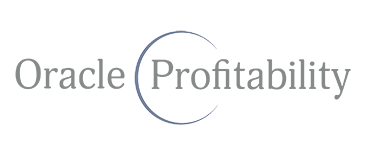How CFOs Shape Your Cash Flow—When They Have the Right Numbers
You brought in a CFO to fix cash flow. But your bank balance still swings like a pendulum—thriving one week, plummeting the next. If you’re doing all the right things and still feeling off balance, the problem might not be your CFO's strategy. It might be the accuracy of the numbers that strategy is built on.
This is the final post in our series on how your financial team shapes cash flow—and why each role matters more than most business owners realize.
In part one, we looked at bookkeepers: the ones capturing every transaction, every invoice, every receipt that lays the groundwork for financial visibility. Read Part One. In part two, we showed how financial controllers elevate that data, turning scattered details into reliable reports with real-time clarity. Read Part Two.
Today, we turn to the CFO—your strategic partner in forecasting, scenario planning, and big-picture decisions. But here's the truth: no CFO, no matter how talented, can lead with confidence if the financial foundation underneath them is shaky.
A sound cash flow strategy requires a synchronized financial team. Bookkeepers log the details. Controllers translate them for accuracy. CFOs turn that clarity into forward momentum. Without the controller bridging the gap, your strategy collapses into guesswork. And that’s what we’re here to prevent.
The CFO’s Job: Looking Ahead
A CFO’s primary role in cash flow is to forecast the future. They look beyond what’s happening today to anticipate upcoming needs and challenges. That means:
Projecting cash inflows and outflows based on accounts receivable and payable
Planning for large, upcoming expenses (inventory, staffing, equipment, etc.)
Modeling growth scenarios: what it will cost, how long it takes to collect, and what capacity is required to support it
Evaluating whether it’s time to invest in growth or hold reserves
For example, one of our clients knows they need $300,000 in the bank at all times just to keep operations running for 30 days. That figure isn't a guess—it’s the financial equivalent of a builder knowing exactly how much concrete is needed for the foundation. Their CFO monitors cash flow weekly to ensure that threshold is met. But that precision only works because the controller keeps the data level: every receivable posted, every bill accounted for, every pending purchase visible. Without that, the strategy would sit on uneven ground—and eventually crack.
Here’s the Catch: Bad Data Derails Strategy
The CFO’s insights are only as strong as the data they receive. That’s where the controller comes in.
If your bookkeeper misses an invoice and your controller isn’t given the visibility to spot a pending purchase order, your CFO might see a surplus that doesn’t actually exist. And when that surprise bill hits, the whole strategy unravels. We’ve seen it happen: a business decides to pay down debt or expand operations, only to realize too late that the cash was never really there.
This isn’t about blame—it’s about having the right structures in place. The bookkeeper gathers the data. The controller ensures it’s accurate and complete. That’s what gives the CFO a real picture to work from.
Without that chain of trust, projections become guesswork—and your business ends up making high-stakes decisions with inaccurate date. The controller isn’t just keeping the books straight—they’re protecting your ability to make smart moves with confidence.
Real-World Consequences
We’ve seen firsthand how even a talented CFO can struggle when the financial foundation is off. One client brought in a CFO to turn around their cash flow, but behind the polished reports, there were red flags: inventory was miscounted, expenses misclassified, and key financial data scattered or missing.
Unfortunately, we as controllers were brought in too late. That business didn’t survive—not because the CFO lacked vision, but because their long term strategy was built on numbers that weren't real. A strong controller is the bridge between bookkeeper and CFO—and without that bridge, you can end up in some deep, dark waters.
The Controller’s Central Role (Again)
The controller sits at the center of the system:
Ensuring books are accurate and up to date
Translating transactions into usable reports
Creating accrual-based visibility into future liabilities
Without a strong controller, a CFO is flying blind. With one, the business can actually act on their strategy.
Where Oracle Profitability Goes Further
At Oracle Profitability, we go beyond the traditional controller role by building collaborative financial systems that link bookkeepers, controllers, and CFOs into one aligned strategy team.
We partner with skilled bookkeepers to ensure every transaction is captured accurately.
We deliver clean, timely reports that give CFOs the visibility they need to make strategic decisions.
We partner with highly skilled CFOs to ensure our clients have the forward-looking insights they need to grow with confidence, backed by accurate, timely financials they can trust
We pinpoint where outdated tools or vendor relationships are bleeding cash—and offer smarter alternatives.
We lead process improvements that stabilize operations and increase profitability.
Our role isn't to replace anyone. It's to empower everyone—ensuring the controller function acts as the glue between financial accuracy and strategy execution.
Final Takeaway
If you're running a million-dollar business, cash flow isn’t something to estimate—it’s something to lead with. That requires reliable books, real-time visibility, and a financial strategy built on solid ground.
At Oracle Profitability, we build the systems and teams that make that possible. If you're ready to turn financial chaos into cash-smart control, let’s talk.


